A ha'porth of tar
First thoughts
The title comes from the saying 'spoiling the ship for a ha'porth of tar' which sums this kit up very well. Some magnificent detail and high quality molding let down by poor attention to accuracy and what can only be described as general laziness. The kit purports to be a Hawker Hart Mk. 1 but actually can only be built accurately as a Hart (India). Even then there are modifications needed to make the kit accurate. The chosen decal options are all inaccurate to one degree or another. One needs to invest in the legendary Modeldecal Hart variants sheet (which thankfully is still readily available from Hannants and at an incredibly reasonable price) but first some information on Harts in India.
History
The Hart was introduced to India and the troublesome North West Frontier (the border area between Pakistan and Afghanistan) very rapidly after service entry of the early pre-production J series. J9947 was sent over to India in 1930 for No. 39 Squadron to get a feel of the aircraft and see whether it would suit. It was a sensation - so much better than the lumbering old Wapitis they had been having to use. J9947 suffered the ignominy of being attacked by a Kite and badly damaged but the concept of using Harts in the region had been validated. Two first series Harts (K1417 and K1418) followed at the beginning of 1931 for further trials being allocated one aircraft each to the two chosen Hart squadrons No. 11 and No. 39. These trials highlighted some necessary changes for the particular India/North West Frontier environment. All home service Harts had a single fuel tank in the upper wing but for India service more fuel was needed and so India service Harts upper wings were fitted with double fuel tanks. The radiator was also larger than home service Harts. Both K1417 and K1418 entered service as single fuel tank Harts but were converted to the Hart (India) specification in India. J9947 stayed a single fuel tank Hart though. With trials over a series of 50 aircraft was constructed (K2083 to K2132) and shipped over to India, starting to arrive in August 1931 minus K2083 which stayed behind for use by the A&AEE but made the journey later. A further series of 5 aircraft was constructed in 1937 (K8627 to K8631) probably as replacements.
The Harts were further modified when they arrived in India - the most prominent modification being the used cartridge case and belt link catcher placed over the ammunition ejection shutes. These were necessary because the tribes who challenged imperial rule would collect spent cartridge cases, refill them and re-use them against the British. The containers were locally made and polished to the usual mirror finish. Radios were only gradually added - early Harts did not carry them and this was a slow process and not complete by 1936.
The Harts were used for various imperial duties, re-supply, bombing and reconnaissance. The side window was enlarged and another window added to the port side and trim tabs added to the tail. Hart (India)s started out with full red/white/blue fin flashes but lost these when the RAF abandoned them on 1st August 1934. The aircraft soldiered on with flight training schools into 1942 but all were gone by 1943.
The Model
The AMG 1/72 model is a scaled down version of their 1/48 Hawker Hart with several simplifications and unfortunate flaws. The 1/48 kit included both the upper wing single tank and double tank centre sections like the Amodel 1/72 Harts. However, for some reason this sensible move wasn't carried over into the 1/72 version and it only includes the double tank upper wing which is all one solid piece. This is great if you want to build a Hart (India) but not so good if you want any other Hart. The next issue is the exhaust pipes. These are nicely molded but the Hart cowling fitted closely round them. AMG have adopted a Hind (post Rams Horn exhausts) arrangement with a large and difficult to fix gap between the cowling and the exhausts. The next major issue is the tail - Hart tail configurations varied a lot but the particular style AMG have chosen (aerial mast, rear position light and low trim tab) was extremely rare on Harts. A fair amount of cutting and filing is needed to correct it. Hart tails started out with no additional decoration but did have a fixed trim tab added to a lot of aircraft in a higher position than AMG have represented. Remember this is an expensive and supposedly high quality, well researched model. The final issue is the lack of slat actuators. This is a standard feature on all Hart variants so where are they? We get 10 (I think) access panels on the etched brass sheet which are not referenced anywhere and seem like optional extras but no slat actuators.
The flaws continue in the decals. None of the schemes are accurate though they look very pretty. The nearest is the 601 Squadron option but this was an early Hart and the squadron wing bars are too short. Once again the Modeldecal Hart variants is a better sheet. The Hart (India) option can only be described as totally wrong. The large fuselage number applies to a No. 39 Squadron aircraft and should be black. No. 11 Squadron's fuselage bands were closer together and when carrying fuselage numbers the latter were small and placed over the fuselage roundel in the flight colours. Aircraft No. 9 would be blue for C flight and would be K2111. The final option, K2443 of No. 33 Squadron, was never in Egypt (it became a maintenance airframe in June 1935, four months before the squadron went to Egypt) - all the 33 Squadron aircraft in Egypt came from the K44-- series and whilst carrying squadron numbers photos show that the squadron emblem wasn't carried. The roundels are wrong as well. Hart roundels pre-August 1934 were 65/55/25 in inches. After 1934 they became 35/55/25 inches. The wing roundels supplied by AMG are all the same size and work out at 51.6 inches. Xtradecal do the correct size but if you have an Amodel Hart and Hector you can use those. W/T stencils are the later box style so an earlier aircraft is not catered for. Earlier W/T stencils which actually survived until 1936 or later can be found on Amodel or Modeldecal sheets.
One needs to be careful about the instructions which can only be described as abysmal. The parts on the sprues are clearly numbered but these don't relate to the instructions. It's important to dry fit. We also have the issue of parts included which are not shown in the instructions (the prominent cowling intakes for example) which seem to be recycled Demon instructions and only a general relation to the Hart. Lazy is the only way to describe this particular effort.
Building the model
Amazingly the model builds very well. One wouldn't think it but yes the construction procedure is actually well thought out, the fit is superb and the detail almost more than enough. Even so we have laziness - the gun barrel is included but not the gun breech! The breech is visible through the front cockpit. The cockpit itself builds well but dry fit DON'T rely on the instructions - dry fit everything. I added some stringers and the bomb aimers panel in addition to gun breech assembly. I omitted the radio equipment because as I mentioned early Harts didn't carry them and this particular Hart (India) was to be an early example. If the radio equipment is included one will need to scratch build a wind driven generator and fit it on the outside of the fuselage.
The tail plane is difficult to assemble and over engineered but looks good when complete. Cut off and replace the bar on the tail fin and check your photos as to the tail configuration. For an early Hart everything needs to be removed. One impressive detail is that AMG have molded the offset for the fin. Hart tail fins were off set three degrees from the centre line to counter the torque of the Kestrel engine. They then molded the cut out for the fin location tab on the centre line. It's a simple job to shift this to the left and really does help the appearance of the aircraft. I used the AMG rudder decals - they are brittle and respond reluctantly to setting solution but saturation is superb particularly the whites. The upper wing is fantastic. Assemble the lower wing (remember to include the lower wing dihedral) and then attach the 'N' interplane struts. Allow to set for a short while then click (literally) the upper wing into place. The cabane struts need trimming to fit though.
A lot of the engineering is impressive and one ends up thinking this kit is schizophrenic. The windscreen is over-engineered but can be done. In many ways I really enjoyed building this model because of the ease with which it went together. I made the cartridge case collector from a piece of plasticard and chrome finished it with my Molotow. I chose to make K2088 '1' of A flight No. 39 Squadron in 1931 just after entering service. The squadron bands were gloss black with the number 1 coming from a Dutch decals sheet and being modified. Roundels were Amodel Hector (65 inch) upper wing, Amodel Hart (55 inch) lower wing and AMG fuselage (25 inch). All serials were Modeldecal as were the early W/T stencils. All decals performed nicely. I used Bare Metal ultra bright chrome and a Molotow chrome pen for the mirror panels and Tamiya X-11 chrome silver satin varnished for the silver dope finish. Rigging was a repurposed SBS Airfix Hawker Demon set which can be made to work quite well. Wire spreaders came from 0.3 mm brass rod and the question mark fuel tank vents were 0.2 mm brass tube (the kit does include these but they are overscale). Control wires were fabricated from 0.15 Infini brass rod. If you wish to do a later Hart (mine was an early variant) and include stores you'll need an Amodel kit. They include all the wonderful stores the Hart carried.
The propeller is a nice piece of work but there needs to be a gap between it and the fuselage. I represented this by adding a couple of etched brass washers to move the propeller forward enough. It's two part which neatly takes care of the infill at the blade roots one normally comes across when this type of propeller if it's molded as one piece. I also dropped the elevators which was a common feature of Hart (India)s on the ground. The kit includes separate elevators so it's not difficult.
The etched brass is another very good feature of the kit. The Vickers Potts oil cooler is very nice but be careful. The rods provided are too thick and need replacing (0.4 mm plastrut is ideal). Early Harts started with 5 vane oil coolers but post August 1934 Hart (India)s had 7 vane oil coolers. The oil coolers were continually upgraded so that Hart (India)s could be seen with 9 vane and even 11 vane coolers and these would need to be sourced from other suppliers. AMG only include a 7 vane cooler but that is appropriate for the particular Hart (India) they chose. The other decal options had 5 vane oil coolers. Like everything to do with Harts, check the photos of which there are a lot.
Conclusion
One can build an excellent looking Hart with this kit. However, it could have been an uber-kit. I've seen reviews praising this kit to the skies and stating how it's the best 1/72 Hart available. No it isn't - the Amodel 1/72 Hart still holds that title. The AMG kit scores in buildability but not in accuracy with some of the decisions taken being bizarre. The simple accuracy issues that the Amodel kit avoids the AMG walks right into. Because one has to correct these errors one ends up taking as much time over this kit as the Amodel Hart. A nice model of a Hart (India) does result but for a single fuel tank Hart go for the Amodel kit and equip it with Modeldecal decals.
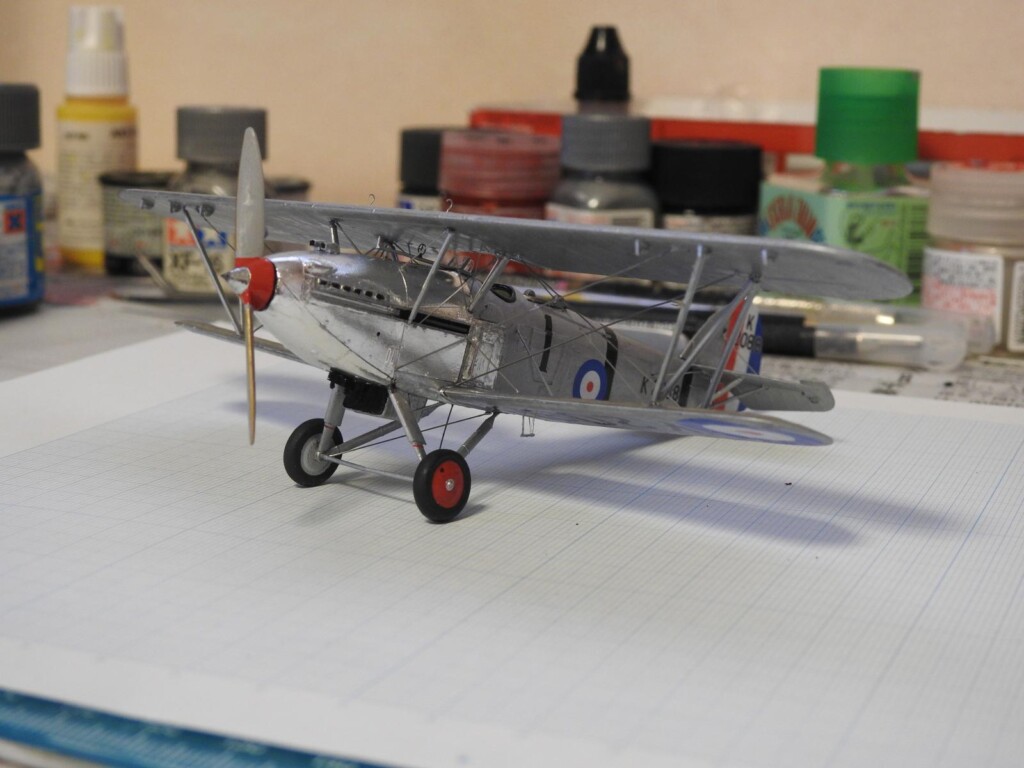
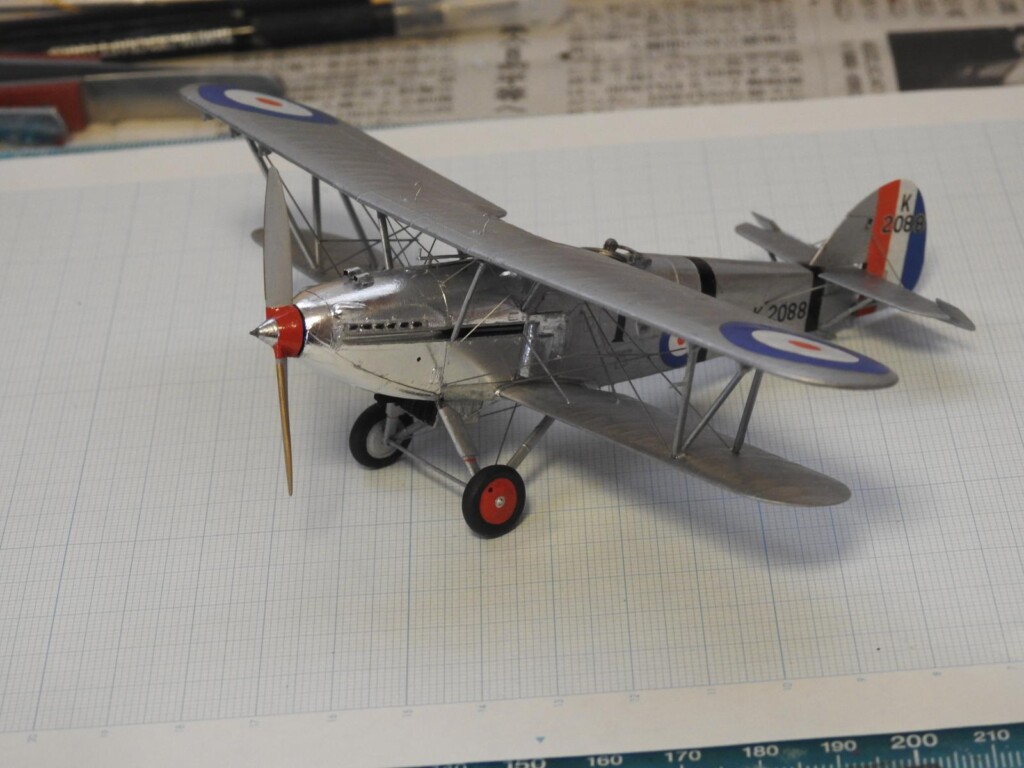
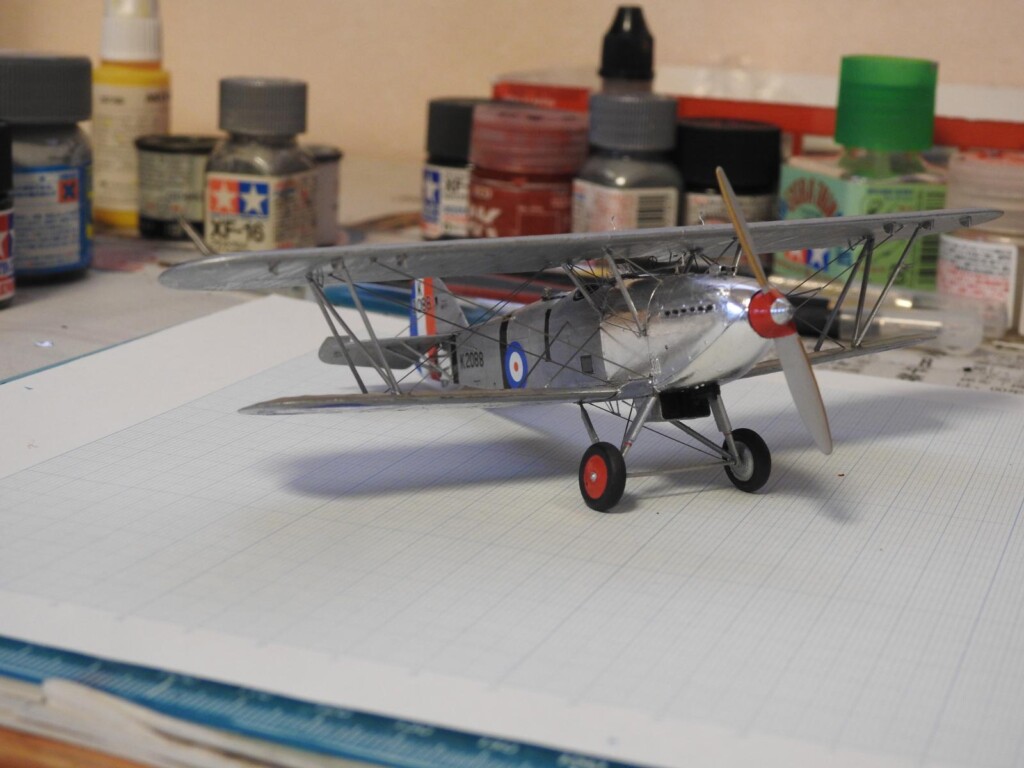
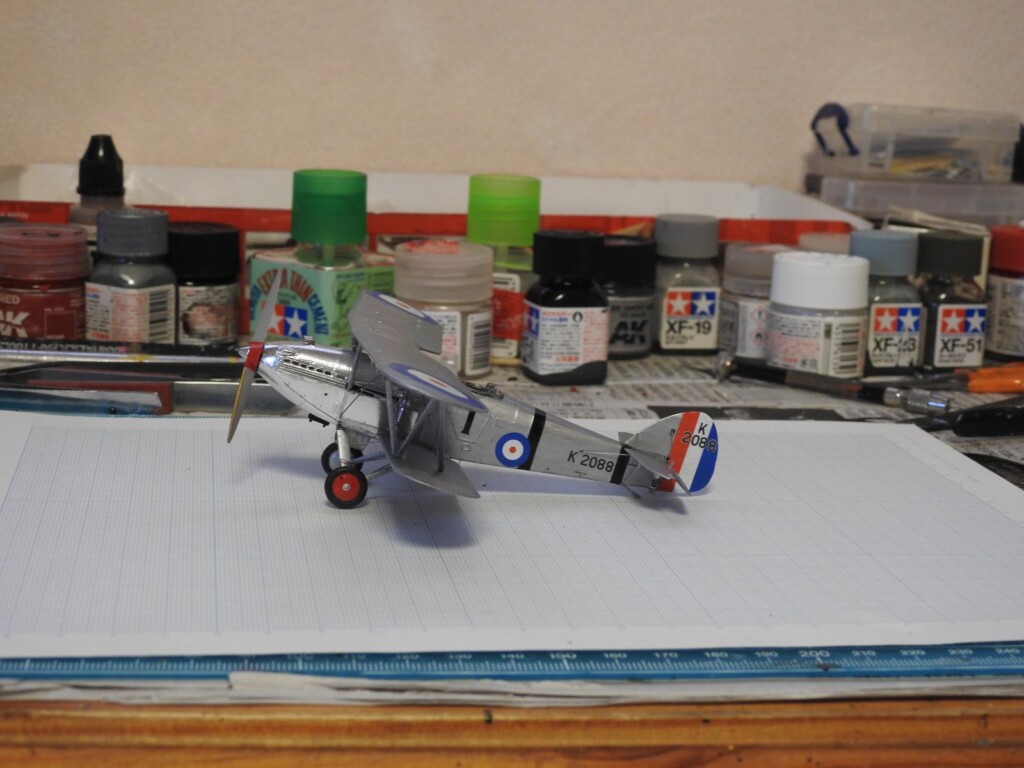
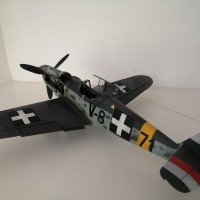
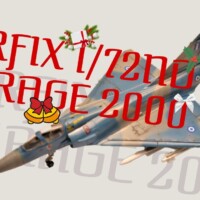
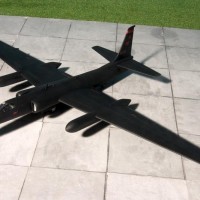

Beautiful result, Christopher. Accuracy issues aside, the quality of AMGs Hart/Hind in both scales is so high that I hope they expand the series.
Hi John
Many thanks for the kind comments. AMG do a 1/72 Demon as well which is probably more accurate but suffers from uninspired decal options.
Terrific review and build, Christopher, she looks great on your work space.
Hi George
Thanks for the kind comments. I agree - with the extra effort it does look a very nice model.
Looks great and thanks for the expansive history.
Hi Lee
Many, many thanks - the history is interesting especially the attack on J9947.
Very nice model. That 1/72 rigging must have been a bear to do (I have a hard enough time with 1/48.)
Hi Dan
You're very kind - thanks. The rigging was actually one of the easier parts. The control wires were the difficult bit.
A wonderful result to look at, Christopher @christopher
Must indeed have been a challenge to get that rigging done this nicely.
Great article as well.
Hi John (@johnb)
Despite my seeming harshness I'm actually impressed by this kit. It does look good when finished and if AMG up their game slightly they will own the field for Harts. The rigging is one of the easier 1/72 challenges and thanks for the very kind comments.
Hey, at least they fixed the exhausts from the 1/48 kit so the engine isn't a V-14!
Nice work and a good result despite the shortcomings. Glad I stuck to the 1/48 kit.
Hi Tom
One step forward, two steps back. Their brainfarts do rival some of Special Hobbys though. Thanks for the kind comments - they're very much appreciated.
Thought it was of larger scale at first. Nice work.
Hi Robert
Many thanks, you're very kind. It does build up nicely provided one does the corrections.
Truly superb job, Christopher! The result is unbelievable, let alone for 1/72!
Excellent writeup too, providing everything a modeler might be looking for.
Many thanks - that's really kind of you to say so. This is a fun build despite the extras AMG would have us do.
Had I not seen it sitting on your bench (next to some known items) I would not have believed it was 1/72! Wonderful build!
Thanks ever so much Greg. The kit does build up very well despite it's flaws and I must admit I am pleased with the result.
In spite of the flaws you mentioned, that's a spectacular build.
You're very kind Chas. This is a good kit despite the errors and omissions and I'm already building another AMG -their Polikarpov R-5.